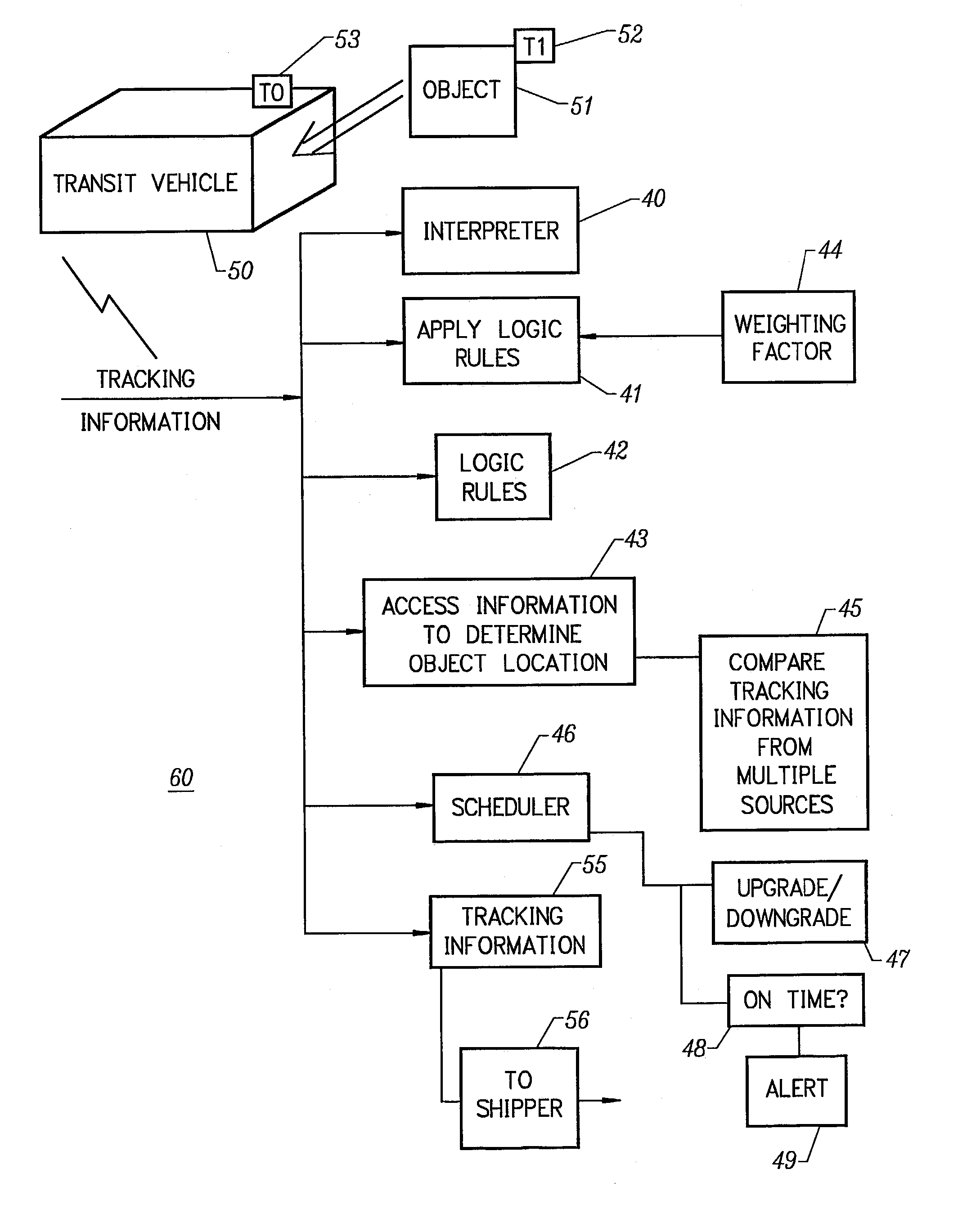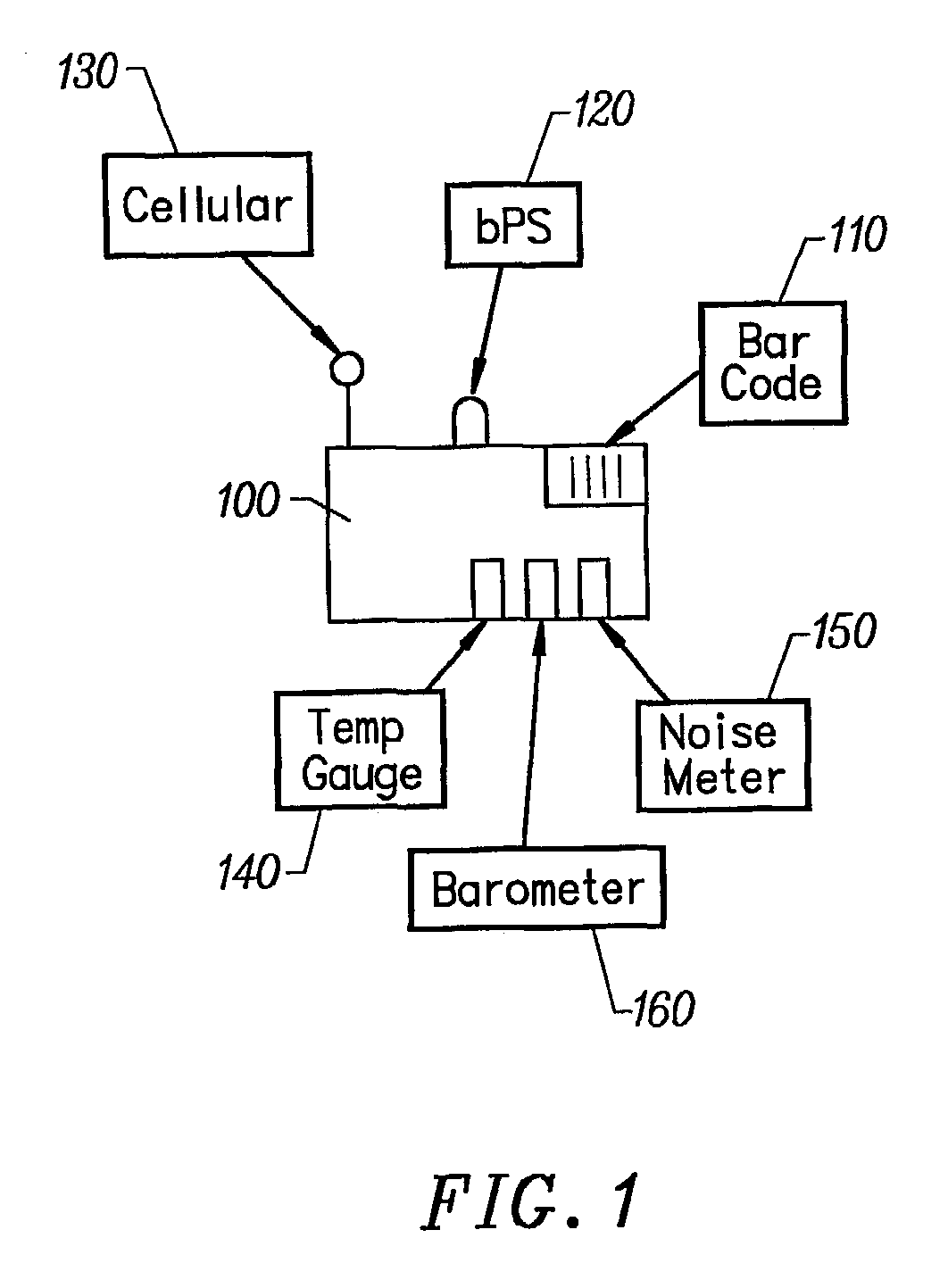Rule based proximity and time based tracking system
a technology of proximity and time based tracking, applied in the field of tracking and monitoring of objects, can solve the problems of not working well in many consumer applications, no information regarding objects for customers, and no communication path for voice or data message information, etc., and achieve the effect of convenient scheduling
- Summary
- Abstract
- Description
- Claims
- Application Information
AI Technical Summary
Benefits of technology
Problems solved by technology
Method used
Image
Examples
Embodiment Construction
[0024]FIG. 1 illustrates the tracking tag 100 and the sources of information with which it is concerned. The tracking tag 100 is attached to an object, usually by an adhesive or other fixation means. The tracking tag preferably has a unique bar code 110 that is registered with the transportation system (TS). The TS consists of a tracking system and a scheduler (discussed infra). The TS keeps such information regarding the object as sender, address, item description, and any special handling instructions. The tracking tag may include such elements as a GPS signal receiver 120, a cellular phone type radio transmitter and receiver 130, a temperature gauge 140, a noise meter 150, and a barometer 160.
[0025]The tracking tag receives GPS satellite signals to determine its location by methods well known in the art. Similarly, the tracking tag determines and communicates its position using the radio signals traditionally used in cellular phones. The tag communicates its GPS position through ...
PUM
 Login to View More
Login to View More Abstract
Description
Claims
Application Information
 Login to View More
Login to View More - R&D
- Intellectual Property
- Life Sciences
- Materials
- Tech Scout
- Unparalleled Data Quality
- Higher Quality Content
- 60% Fewer Hallucinations
Browse by: Latest US Patents, China's latest patents, Technical Efficacy Thesaurus, Application Domain, Technology Topic, Popular Technical Reports.
© 2025 PatSnap. All rights reserved.Legal|Privacy policy|Modern Slavery Act Transparency Statement|Sitemap|About US| Contact US: help@patsnap.com



